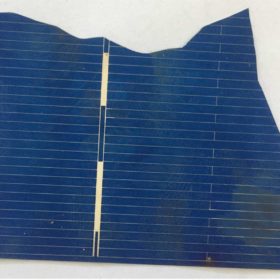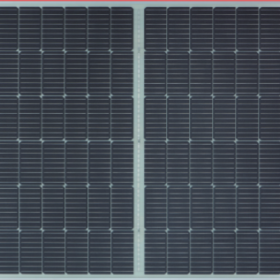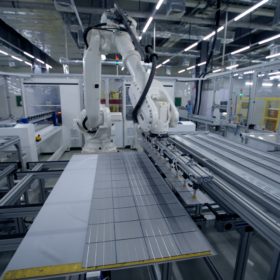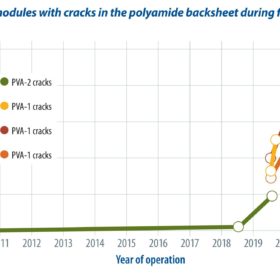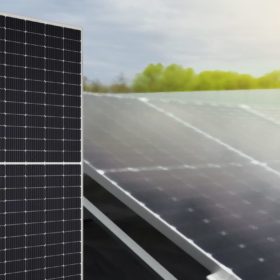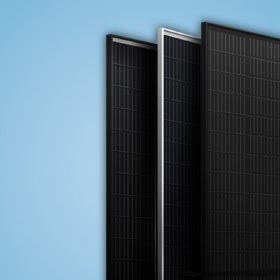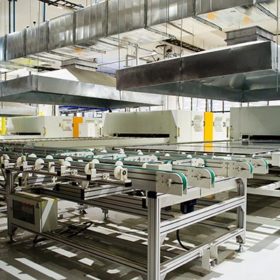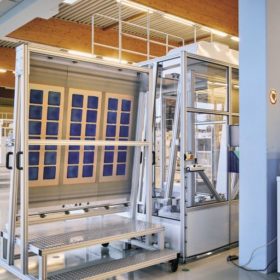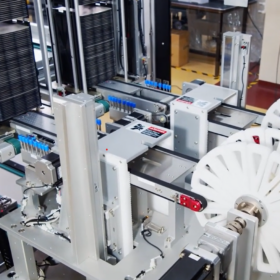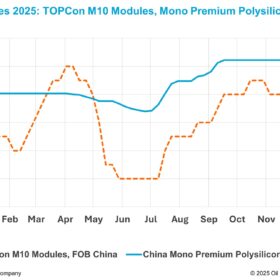Investors bet big on renewables while solar takes on coal
Foreign direct investment’s role in bringing in finance, superior technology and other resources is undoubtedly a critical one. The Indian government has tried to create a conducive environment for enabling flow of foreign investments into the solar energy sector in the country, but the norms need to be eased further to really push the industry to its maximum growth potential.
New tech to recover pure silicon from end-of-life solar cells
An Indian research group has used three different chemicals instead of commonly used hydrofluoric acid to separate silicon from the cell. The technique is claimed to be able to deliver recycled silicon with a purity of up to 99.9984%.
Sunman unveils 430 W glass free solar module
The new product has a power conversion efficiency of up to 19.3% and a weight of 11.2 kg. The module is produced with glass fiber reinforced plastic, which the manufacturer says reduces light reflection and opens up new assembly options.
Module and shipping cost inflation could cost the world 50 GW of solar next year
The input costs of the two biggest contributors to solar plant development expense have gone through the roof since the world began to come out of Covid-19 lockdowns, to leave project developers with some difficult choices.
Jindal India Solar, Shirdi Sai, Reliance and Adani the lowest bidders in production-linked solar tender
The four companies will each have half of their planned 4 GW annual production of polysilicon-to-module output subsidized by public funds.
The long read: PV backsheets – replace or repair?
Backsheet chalking, especially of polyamide backsheet films, doesn’t take long to lead to cracks and then safety shutdowns. Sometimes, though, the period may be much longer or shorter than expected. Assessing the risk and whether on-site repairs offer a long-term solution is currently a topic of strong debate within the PV industry, as Cornelia Lichner from the pv magazine Germany team reports.
Most significant roadblocks to India’s solar energy goals
India needs to install an average of 25 GW solar capacity every year to reach its renewable energy target of ‘450 GW by 2030’ with over 60% (280 GW) from solar. The nation must build enough manufacturing capacity back home to be ready on the supply side to support the new installations.
Big modules head for standardization
PV manufacturing giant Trina Solar says it has agreed with other industry players on a set of standard dimensions and other technical specifications for PV modules utilizing 210mm wafers – the largest currently available on the market. The manufacturer says it expects the China Photovoltaic Industry Association to formally release the standard before the end of October.
NTPC renewables arm invites proposals for 15 GW of solar modules
The renewable energy arm of NTPC seeks to enter into sourcing partnerships with Indian manufacturers for 15 GW of solar modules over the next five years. Manufacturers planning to set up their facilities in the next six months under the production-linked incentive (PLI) Scheme of the government of India are also eligible to apply.
The long read: A messy perovskite separation
There are increasing signs that a new era for PV production in Europe may be dawning. However, two pioneers of PV technology have decided, at this moment, to part ways. And while at present there are more questions than answers, technology and business strategy both appear to have played a role.

